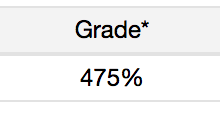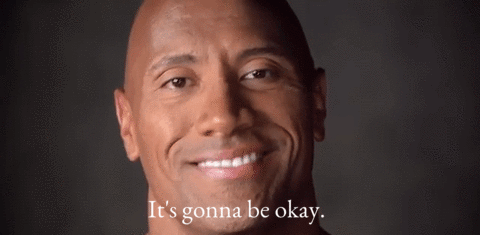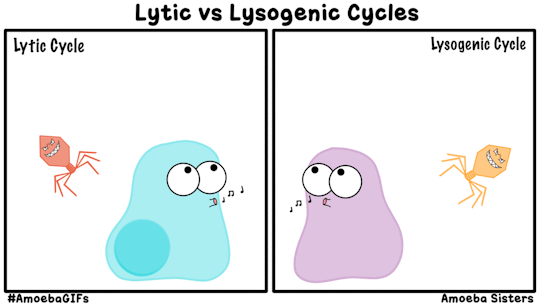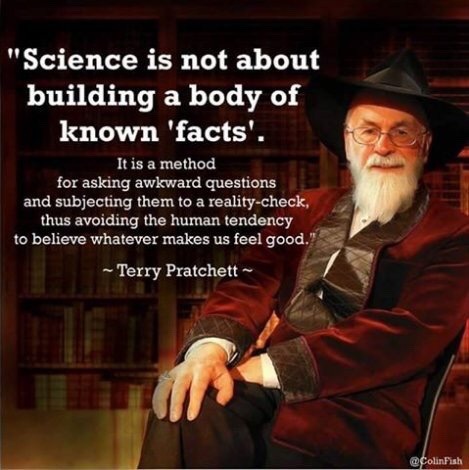Photo

Welcome to the final installment in this miniseries! So far, we’ve talked about general techniques and how to combat nervousness. For this last bit, let’s talk about ways to use your body and your slides to create the most efficient and interesting presentation you can.
Body Language
Body language is our main way to communicate as humans. We constantly transmit feelings and moods to one another. That is why it is so crucial for you to appear open and enthusiastic about your topic – people are simply not going to care half as much, otherwise. Learning how to control and utilize your body language is a very important, often overlooked part of delivering an excellent presentation, and there are quite a few things you can work on.
The first thing you need to do is remember that during the vast majority of the time, you never look as nervous as you feel. Unless you have clear, visible signs of nervousness – sweating profusely, shaking hands, a shaking voice, an out-of-control gaze – then people would never know you’re breaking to pieces inside. I’ll go over some tools on how to use your body to combat these signs of extreme nervousness, but first, let us cover some ways to use your body during a presentation in general.
First, you need to get your arms and hands under control. Your arms are a very efficient tool to underline or add emphasis to what you’re saying, and if they’re hanging down like dead fish, or flailing wildly about, you are completely missing out on that aspect, which is really easy to use to your advantage! You must relax, but not so much that you look threatening or disinterested as we talked about in the previous post. If you’re doing your presentation standing up, find three standard positions your arms can return to. An example of this is one hand in your pocket, and the other bent at the elbow, resting at your side. That way, your arm is still in an active position from which you can easily use it to make an illustration with your hands, or gesture to your slides if needed. If you’re sitting down as you would at an interview, create 6 of these standard positions you can return to: three for chairs with armrests, and three for chairs without. As with everything else, you can practice this in front of a mirror until you find something you’re happy with!

Another thing you must do is something your mom has been telling you your entire life: Straighten up. This is another thing connected to basic human interpretation of body language, and the mood you’re transmitting to your audience. A sunken-together body looks tired, sad, and sick, while a straight back makes you look healthy, happy, and in control of the situation, and that’s exactly what you want to appear as. Straighten your back every damn time you catch yourself relaxing just a little too much, and thank yourself later.
When you’re doing a presentation, especially one that goes on for a while, then you want to walk around. Don’t try to run a marathon during your presentation – stand in one place for 5-10 minutes, or until you reach a natural break in your speech, and then move. Roughly, you can divide the are in front of your audience into five evenly spaced ‘bases’, and you need to move between them. Keep in mind here that no matter which base you’re standing on, you still need to look at your entire audience – your base doesn’t dictate the direction of your gaze! Turn your torso, not your feet, and keep talking while you walk to avoid creating an awkward break in your presentation. Returning briefly to eye contact, consider this: Are there more or fewer than 60 people in your audience? If there are fewer, you can hold each individual’s gaze for 3-5 seconds. If there are more, divide the audience into zones and let your gaze shift between them every 5-10 seconds.

I promised you I’d take a moment to share some things you can do to hide the physical signs of extreme anxiety or stage fright. Just first of all, please remember that 95% of the time, you do not actually look nervous even when you feel nervous. These tools are for when your voice is audibly shaking, or your hands visibly shaking, or you just can’t look people in the eye. If your body doesn’t do this, congratulations! You don’t actually need these tools at all and can focus on working on other aspects.
If your hands are shaking, hide them. Put them behind your back. Put them in your pockets. Remember the standard positions with your arms – just make sure your hands aren’t really visible in any of them, and your arms will still seem dynamic as you change between positions without your treacherous hands giving you away. Don’t worry that you’re sabotaging yourself because you’re not gesticulating – seeming more confident by hiding your hands will give people a much more favorable impression of you than you’d gain by pointing at a PowerPoint slide one time.
If your voice is shaking, I’m sorry, that’s a tough one to combat, but you can do it. You need to get your body used to you speaking in unnatural situations. This exercise can be a little daunting, but if you have to do presentations or go to interviews often, the results are potentially invaluable. Put on some headphones and listen to some music, and then go for a walk outside. To begin with, you can do this in a secluded area – a forest, or quiet neighborhood. And then talk to yourself. Practice your presentation, rehearse what you need to say, and don’t worry about hiccups or forgetting things – remember that mistakes and pauses are normal and make you seem human. If someone sees you on the street, they’ll probably think you’re a weirdo, but y’know what, screw them. You’re here to practice speaking in an unusual situation. Keep doing this exercise, and do it often, until you can walk through a crowded mall, rehearsing your presentation, without your voice shaking. It will take time, but you can do it.
If you can’t look people in the eyes, an option for you is, as I’ve mentioned in an earlier post, to look at a point right above people. This is absolutely a last resort, as this will distance you from your audience, so if you feel like you can handle eye contact today, then try.

Your Slides: Dos & Don’ts
Slides should be your tool, an illustration, but ideally not something you’d need to rely on for your presentation. You need to be able to perform without your slides entirely – imagine if the program decides to just not work and you stand in front of 100 people and realize that oh, shit – you’re in the very deep end right now. No, you need to avoid that situation altogether by treating slides as something extra, not a key component. That will help get you into the right mindset.
Do: Use pictures. Pictures will keep your audience occupied with visual input, while you keep them occupied with auditory input. You avoid stressing out their brains this way and will make your subject matter easier to understand. Find one good picture that will illustrate a key point neatly – but try to avoid obviously staged stock photos. They are cheesy and reek of untrustworthiness, which is the opposite of what you want.
Point at or indicate the screen when you change the slide or need your audience to pay extra attention to it. Literally, guide them with one of your hands. Use your body to clearly express to people that this right here is very important right now.
Don’t: Use text. No, seriously, try to avoid it at all costs. If your audience has to read as well as listen to you, they won’t be able to remember a single thing – because both you and your slide are trying to activate the same center in their brains. If you must use text – like a quote, for instance – don’t just let it sit. Read it aloud, explain its importance and relevance. Introduce the text and then continue your presentation from that. Remember to use a text size that everyone is able to read from a distance. Anything smaller than 18 pt is a mistake; and if you think that making your text a size smaller just so you can fit everything on one slide is a good idea, you are wrong. In that case, you already have far too much text, and it will be way too small for anyone to read without concentrating, further taking the focus away from the most important element of the presentation: you. If you’re the kind of person who adds a lot of text to slides so that you’ll remember what you need to say, it’s a bad habit and you must practice getting rid of it. At most you can have cue cards with a few words on them; never full sentences. If you rely less on full, rehearsed statements, you will be in a much easier position to navigate around mistakes or incidents that are outside of your control (such as tech not working or people barging in late).
Maybe: Use graphs. Graphs are good and can be used effectively to illustrate a complicated topic or create a comparison, but think about why the graph is there. Is it there to show the difference between 2009 and 2010? To show the development from March to December? Highlight the important parts of your graph to direct people’s attention to it, and away from all the other clutter that you actually don’t need to support your presentation. If there are labels on the graph, make sure they are very clearly visible and readable, as per the point above.

Thus ends this miniseries on presentation skills! Read up on how to get a great start and how to deal with nervousness here. Thank you so much for reading and reblogging, and I hope you’ve found this useful!
tracking #lookasta - I’d love to see your posts! // message me
463 notes
·
View notes
Text
Shall we try again?
Current Objectives to track on this blog:
Explore your own wardrobe! Dig out the things you don’t wear, mix up the stuff that you do, figure out if it still fits, get rid of things you hate!
Read more of your books.
Take notes on Cell and Molecular Biology by Lodish
1 note
·
View note
Photo


Your body is an incredibly bizarre machine.
“What you see is a myosin protein dragging an endorphin along a filament to the inner part of the brain’s parietal cortex which creates happiness. Happiness. You’re looking at happiness.”
571K notes
·
View notes
Text
pls
somehow I got 95/20 on an assignment

I hope they never fix it and leave it this way forever
614K notes
·
View notes
Text
24 Invaluable Skills To Learn For Free Online This Year
Here’s an easy resolution: This stuff is all free as long as you have access to a computer, and the skills you learn will be invaluable in your career, and/or life in general.
1. Become awesome at Excel.
Chandoo is one of many gracious Excel experts who wants to share their knowledge with the world. Excel excellence is one of those skills that will improve your chances of getting a good job instantly, and it will continue to prove invaluable over the course of your career. What are you waiting for?
2. Learn how to code.
littleanimalgifs.tumblr.com
Perhaps no other skill you can learn for free online has as much potential to lead to a lucrative career. Want to build a site for your startup? Want to build the next big app? Want to get hired at a place like BuzzFeed? You should learn to code. There are a lot of places that offer free or cheap online coding tutorials, but I recommend Code Academy for their breadth and innovative program. If you want to try a more traditional route, Harvard offers its excellent Introduction to Computer Science course online for free.
3. Make a dynamic website.
You could use a pre-existing template or blogging service, or you could learn Ruby on Rails and probably change your life forever. Here’s an extremely helpful long list of free Ruby learning tools that includes everything from Rails for Zombies to Learn Ruby The Hard Way. Go! Ruby! Some basic programming experience, like one of the courses above, might be helpful (but not necessarily required if you’re patient with yourself).
4. Learn to make a mobile game.
If you’re not interested in coding anything other than fun game apps, you could trythis course from the University of Reading. It promises to teach you how to build a game in Java, even if you don’t have programming experience! If you want to make a truly great game, you might want to read/listen up on Game Theory first.
5. Start reading faster.
Spreeder is a free online program that will improve your reading skill and comprehension no matter how old you are. With enough practice, you could learn to double, triple, or even quadruple the speed at which you read passages currently, which is basically like adding years to your life.
6. Learn a language!
With Duolingo, you can learn Spanish, French, Portuguese, Italian, or English (from any of the above or more). There’s a mobile app and a website, and the extensive courses are completely free.
Full disclosure: BuzzFeed and other websites are in a partnership with DuoLingo, but they did not pay or ask for this placement.
7. Pickle your own vegetables.
Tired of your farmer’s market haul going bad before you use it all? Or do you just love tangy pickled veggies? You too can pickle like a pro thanks to SkillShare and Travis Grillo.
8. Improve your public speaking skills.
You can take the University of Washington’s Intro to Public Speaking for free online. Once you learn a few tricks of the trade, you’ll be able to go into situations like being asked to present at a company meeting or giving a presentation in class without nearly as much fear and loathing.
9. Get a basic handle of statistics.
UC Berkeley put a stats intro class on iTunes. Once you know how to understand the numbers yourself, you’ll never read a biased “news” article the same way again — 100% of authors of this post agree!
10. Understand basic psychology.
Knowing the basics of psych will bring context to your understanding of yourself, the dynamics of your family and friendships, what’s really going on with your coworkers, and the woes and wonders of society in general. Yale University has its Intro to Psychology lectures online for free.
11. Make your own music.
Step one: Learn how to play guitar: Justin Guitar is a fine and free place to start learning chords and the basic skills you’ll need to be able to play guitar — from there, it’s up to you, but once you know the basics, just looking up tabs for your favorite songs and learning them on your own is how many young guitar players get their start (plus it’s an excellent party trick).
Step two: A delightful free voice lesson from Berklee College Of Music.
Step three: Have you always thought you had an inner TSwift? Berklee College of Music offers an Introduction to Songwriting course completely for free online. The course is six weeks long, and by the end of the lesson you’ll have at least one completed song.
Step four: Lifehacker’s basics of music production will help you put it all together once you have the skills down! You’ll be recording your own music, ready to share with your valentine or the entire world, in no time!
12. Learn to negotiate.
Let Stanford’s Stan Christensen explain how to negotiate in business and your personal life, managing relationships for your personal gain and not letting yourself be steamrolled. There are a lot of football metaphors and it’s great.
13. Stop hating math.
If you struggled with math throughout school and now have trouble applying it in real-world situations when it crops up, try Saylor.org’s Real World Math course. It will reteach you basic math skills as they apply IRL. Very helpful!
14. Start drawing!
All kids draw — so why do we become so afraid of it as adults? Everyone should feel comfortable with a sketchbook and pencil, and sketching is a wonderful way to express your creativity. DrawSpace is a great place to start. (I also highly recommend the book Drawing on the Right Side of the Brain if you can drop a few dollars for a used copy.)
15. Make your own animated GIF.
BuzzFeed’s own Katie Notopoulos has a great, simple guide to making an animated GIF without Photoshop. This is all you need to be the king or queen of Tumblr or your favorite email chains.
16. Appreciate jazz.
reddit.com
Have you never really “gotten” jazz? If you want to be able to participate in conversations at fancy parties and/or just add some context to your appreciation of all music, try this free online course from UT Austin.
17. Write well.
Macalester College’s lecture series is excellent. If you’re more interested in journalism, try Wikiversity’s course selection.
18. Get better at using Photoshop.
Another invaluable skill that will get you places in your career, learning Photoshop can be as fun as watching the hilarious videos on You Suck At Photoshop or as serious as this extensive Udemy training course (focused on photo retouching).
19. Take decent pictures.
Lifehacker’s basics of photography might be a good place to start. Learn how your camera works, the basic of composition, and editing images in post-production. If you finish that and you’re not sure what to do next, here’s a short course on displaying and sharing your digital photographs.
20. Learn to knit.
Instructables has a great course by a woman who is herself an online-taught knitter. You’ll be making baby hats and cute scarves before this winter’s over!
21. Get started with investing in stocks.
If you are lucky enough to have a regular income, you should start learning about savings and investment now. Investopedia has a ton of online resources, including this free stocks basics course. Invest away!
22. Clean your house in a short amount of time.
Unf$#k Your Habitat has a great emergency cleaning guide for when your mother-in-law springs a surprise visit on you. While you’re over there, the entire blog is good for getting organized and clean in the long term, not just in “emergencies.” You’ll be happier for it.
23. Start practicing yoga.
Most cities have free community classes (try just searching Google or inquiring at your local yoga studio), or if you’re more comfortable trying yoga at home, YogaGlohas a great 15-day trial and Yome is a compendium of 100% free yoga videos. If you’re already familiar with basic yoga positions but you need an easy way to practice at home, I recommend YogaTailor’s free trial as well.
24. Tie your shoelaces more efficiently.
It’s simple and just imagine the minutes of your life you’ll save!
252K notes
·
View notes
Text
Harry Potter Ambient Noise Masterlist
Some Harry Potter inspired background noises for you all!
Getting to Hogwarts
Platform 9 ¾
Hogwarts Express
Storm On The Hogwarts Express
Hogwarts Express Compartment
Death Eaters - Hogwarts Express
At Hogwarts
Rainy Hogwarts
Hogwarts After Dark
The Great Hall At Hogwarts
Halloween At Hogwarts
Christmas Cheer At Hogwarts
Hogwarts Grounds In Summer
Snape’s Office
McGonagall’s Office
Regan Ravenclaw’s Study
Owlery
Under The Hogwarts Lake
Hogwarts Grounds
The Black Lake
The Forbidden Forest
Working By The Great Lake
These Halls Are No Longer Safe
Quidditch
The Four Houses
Gryffindor
Gryffindor Tower Sounds
Gryffindor Fireplace
Gryffindor Dormitory
Gryffindor Common Room - Rainy
Gryffindor Common Room With Pets
Slytherin
Slytherin Common Room
Slytherin Dormitory
Study Like A Slytherin!
Slytherin Evening
Slytherin Study Room
Hufflepuff
Hufflepuff Dormitory
Evening In The Hufflepuff Common Room
Cozy Hufflepuff Common Room
Hufflepuff Common Room w/ Harp
Ravenclaw
Ravenclaw Common Room
Ravenclaw Dormitory
Ravenclaw Window Sill
Ravenclaw Study
Ravenclaw’s Lazy Sunday
Study and Learn
The Perfect Hogwarts Library
Hogwarts Library Realistic
Transfiguration Classroom
Classroom 11
Potions Class
Hogsmeade
Hogsmeade
Rainy Hogsmeade Afternoon
Three Broomsticks Inn
Madame Puddifoot’s Tea Shop
Hogsmeade Before Christmas
Outside Hogwarts
Malfoy Manor
Breakfast At The Burrow
Shell Cottage
Diagon Alley Shops
Weasley And Weasley
Weasley’s Wizarding Wheezes
Leaky Cauldron
The Quidditch World Cup
94K notes
·
View notes
Text
Semester is over!
Reflection- not horrendous. Too many completely unproductive days, Not as much finished now as I would’ve liked, Pleased with all of my coursework (pats self on back). Now for Christmas (and revision but we’ll just gloss over that shall we).
2 notes
·
View notes
Photo


i really needed this today, so for anyone else who might
567K notes
·
View notes
Text
Never give up on a day...
So I made cookies and did washing today. These were good, worthwhile things which have or will make me happy. It’s currently 10:16pm but I think I can finish taking notes on my Vaccines chapter and sort out my ‘To Do’ list for the upcoming week. Get SOMETHING done each day!
K
2 notes
·
View notes
Text
MY HOUSEMATES ARE RIDICULOUS: #1
CONTEXT: I have asked why both the front and back doors are open.
Female Housemate: ‘Yeah, at home we tend to leave all the doors open in the summer because our house gets really hot.’
Me: *nods understandingly*
FH: ‘We often forget to shut them though so we’ll go out and leave them open.’
Me: !!!!!!!
0 notes
Photo

Lytic vs. Lysogenic Viral Replication Cycles! Remember that lysogenic is the longer, sneaky cycle, but (often) the lysogenic cycle will be triggered into the lytic cycle.
Be sure to check out all our science GIFs here for your studyblrs, teacher websites, presentations, or general amusement! Just please keep our name on there and don’t sell them! :D
1K notes
·
View notes
Text
No to Low Stress College Study Strategy
I started using this study method my 2nd month of college, when I realized that it was better for study-life balance and my emotional wellbeing. It makes me feel productive and alert all day, and gives me plenty of free time to pursue hobbies, clubs, and personal interests. It sounds kind of hardcore at first, but it’s seriously wonderful if you give it a try! Here’s the game plan:
After the first few days of the semester, I sit down with all of the syllabi from all of my classes and write down every single assignment for the rest of the semester into my planner. Include exams, readings, lab report due dates, worksheets, essays, etc. Everything.
Every weekend, I set aside however much time I need to knock out every single assignment for the upcoming week that is possible to do in advance. I do my textbook readings, textbook practice problems, my humanities readings, short essays or write-ups to accompany those humanities readings, etc.
Even though I’m doing more work, I generally spend the same amount of time in the library as my friends who only do their work for Monday over the weekend. This is because if you don’t commit to doing a large number of assignments, you tend to spend a lot more time on minor assignments than is truly necessary - do I really need to spend 3 hours on this 1-page essay for my English class if it’s only graded on a 10 point scale? Couldn’t I finish this in 1 hour and then devote more time to the rest of the readings I need to do for that class this week?
I still have enough time to sleep in, have long lunch breaks, go the gym, go to parties in the evening, etc.
You can do this, no matter your workload. I am a pre-med science major taking 20 credits (max course load) a semester, with two labs, and I can get it done. My roommate is an English major with heavy novel reading assignments and she can get it done. (Disclaimer: this mostly applies to undergraduates.)
Research papers and midterm exam studying generally get their own day separate from homework assignments. I like writing essays in 1 or 2 sittings, but if you like to spread it out just break up the essay into manageable pieces and do it over multiple weekends, or do the pieces between classes (see next bullet point).
After blasting through most of my assignments over the weekend, during the week I generally only have to do busy-work that is assigned at the end of classes and continue studying for midterms that week. I easily finish these assignments in the breaks between classes during the day.
With this strategy, I always complete all of my homework well before dinnertime, and often have days when I don’t have any assignments to do. I use this free time for club meetings, hanging out with friends, going to the gym, marathoning Netflix, pursuing hobbies, working a job, whatever.
I also use this extra time to be able to study for exams much more effectively - when you don’t have busywork assignments floating in the back of your mind, it is much easier to focus. You will study more productively and effectively, and with much less stress. Exams are worth way more of your grade than the homework assignments you blast through each weekend, so it’s best to be able to focus exclusively on them Monday - Friday.
The best part about this strategy is that your workload is heavy on Sunday and sometimes Saturday, but you get to relax Monday - Friday. You basically have a 5 day weekend every week, assuming you enjoy going to class.
If anyone also uses this method, I’d love to hear from you or hear your variants/study suggestions! If anyone tries out this method for 1 or 2 weeks and finds that it works for them, I’d love to hear about it! If you try it and hate it with a fiery burning passion and loathe me for even suggesting it, I’d love to hear about it!
I believe in you!<3 No matter what study method you choose to use, just do your best and exceed your own expectations.
40K notes
·
View notes
Photo

Studying, done right, can be the most rewarding of all activites.
It is stimulating, but relaxing. You’re focused, but wandering your mind. Your mind is abuzz, but your body breathes slow. You’re alone, but in the company of millenia of thinking.
You pick something up, take it apart and you make it your own. You’re literally assembling your future thoughts. You’re in control of how you will see the world.
You’re growing, but you’re raising yourself.
(by x)
20K notes
·
View notes
Photo


I painted these today. I think I’m improving.
#oapu#learning#painting#watercolour#paint#flowers#rose#poppy#pink roses#trial and error#not too bad#summer#project
0 notes
Photo

Well, I didn’t want to hurt anyone’s feelings.
0 notes

